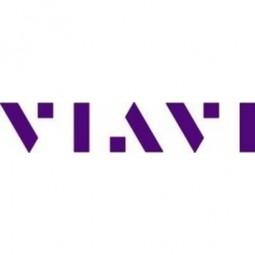
Technology Category
- Application Infrastructure & Middleware - Event-Driven Application
- Sensors - Liquid Detection Sensors
Applicable Industries
- Aerospace
- Telecommunications
Applicable Functions
- Maintenance
- Quality Assurance
Use Cases
- Traffic Monitoring
- Transportation Simulation
Services
- Hardware Design & Engineering Services
- Testing & Certification
The Customer
Cisco
About The Customer
Cisco is a multinational technology conglomerate that develops, manufactures, and sells networking hardware, software, telecommunications equipment, and other high-technology services and products. They are known for their innovative solutions in the field of Internet of Things, domain security, and energy management. The ASR 5000 Series is one of their products designed to address the high-performance requirements of the next generation of mobile Internet. It contains real-time integrated, session-state intelligence, enabling it to effectively manage IP-based flows on a per-session basis. The enhanced charging service function of the ASR 5000 Series is designed to identify and manage traffic on a per-session basis, helping develop tiered and detailed billing schemes based on mobile subscribers' usage.
The Challenge
Cisco's ASR 5000 Series is designed to address the high-performance requirements of the next generation of mobile Internet. It contains real-time integrated, session-state intelligence, enabling it to effectively manage IP-based flows on a per-session basis. A significant challenge that Cisco faced was how to efficiently test the stateful reliability of the ASR’s enhanced charging service function, which is part of the packet data network gateway (PGW), at a highly scaled level of network traffic load. The enhanced charging service (ECS) function is designed to identify and manage traffic on a per-session basis, helping develop tiered and detailed billing schemes based on mobile subscribers' usage. The challenge was to efficiently and reliably test the ECS function with an array of traffic types. The ECS is part of the LTE PGW, adding an additional complexity to the challenge of testing; requiring that the IP application flows be delivered in GTP encapsulated tunnels.
The Solution
Cisco chose TeraVM to benchmark the performance of the enhanced charging service function of the ASR 5000 Series. TeraVM was selected for its ability to emulate GTP encapsulated flows at scale, stateful application flows including HTTPS in GTP tunnel encapsulations, and its ability to statefully emulate multiple server-side applications. It also offered a highly scalable virtualized IP test solution that runs on Cisco UCS hardware. TeraVM was used to emulate the subscriber flows at scale, each UE having a unique IMSI identification. It was also used to emulate the MME enabling the EPC to manage the user plane traffic. The GTP encapsulated flows on the user plane contain fully stateful application traffic. TeraVM was also used to emulate multiple application servers such as web (HTTP & HTTPS), email, voice, and video. The emulated UE and application flows are fully stateful and can connect to emulated and/or third-party application servers.
Operational Impact
Quantitative Benefit

Case Study missing?
Start adding your own!
Register with your work email and create a new case study profile for your business.
Related Case Studies.

Case Study
Airbus Soars with Wearable Technology
Building an Airbus aircraft involves complex manufacturing processes consisting of thousands of moving parts. Speed and accuracy are critical to business and competitive advantage. Improvements in both would have high impact on Airbus’ bottom line. Airbus wanted to help operators reduce the complexity of assembling cabin seats and decrease the time required to complete this task.

Case Study
Aircraft Predictive Maintenance and Workflow Optimization
First, aircraft manufacturer have trouble monitoring the health of aircraft systems with health prognostics and deliver predictive maintenance insights. Second, aircraft manufacturer wants a solution that can provide an in-context advisory and align job assignments to match technician experience and expertise.

Case Study
Aerospace & Defense Case Study Airbus
For the development of its new wide-body aircraft, Airbus needed to ensure quality and consistency across all internal and external stakeholders. Airbus had many challenges including a very aggressive development schedule and the need to ramp up production quickly to satisfy their delivery commitments. The lack of communication extended design time and introduced errors that drove up costs.

Case Study
Developing Smart Tools for the Airbus Factory
Manufacturing and assembly of aircraft, which involves tens of thousands of steps that must be followed by the operators, and a single mistake in the process could cost hundreds of thousands of dollars to fix, makes the room for error very small.

Case Study
Accelerate Production for Spirit AeroSystems
The manufacture and assembly of massive fuselage assemblies and other large structures generates a river of data. In fact, the bill of materials for a single fuselage alone can be millions of rows of data. In-house production processes and testing, as well as other manufacturers and customers created data flows that overwhelmed previous processes and information systems. Spirit’s customer base had grown substantially since their 2005 divestiture from Boeing, resulting in a $41 billion backlog of orders to fill. To address this backlog, meet increased customer demands and minimize additional capital investment, the company needed a way to improve throughput in the existing operational footprint. Spirit had a requirement from customers to increase fuselage production by 30%. To accomplish this goal, Spirit needed real-time information on its value chain and workflow. However, the two terabytes of data being pulled from their SAP ECC was unmanageable and overloaded their business warehouse. It had become time-consuming and difficult to pull aggregate data, disaggregate it for the needed information and then reassemble to create a report. During the 6-8 hours it took to build a report, another work shift (they run three per day) would have already taken place, thus the report content was out-of-date before it was ever delivered. As a result, supervisors often had to rely on manual efforts to provide charts, reports and analysis.




